Learn how to make pangrattato with this easy recipe. This Italian breadcrumb topping is pan-toasted in garlic-infused olive oil and seasoned with herbs and spices (though get creative!) until golden brown and crispy for an excellent accompaniment to pasta, soup, salad, roasted vegetables, and more.
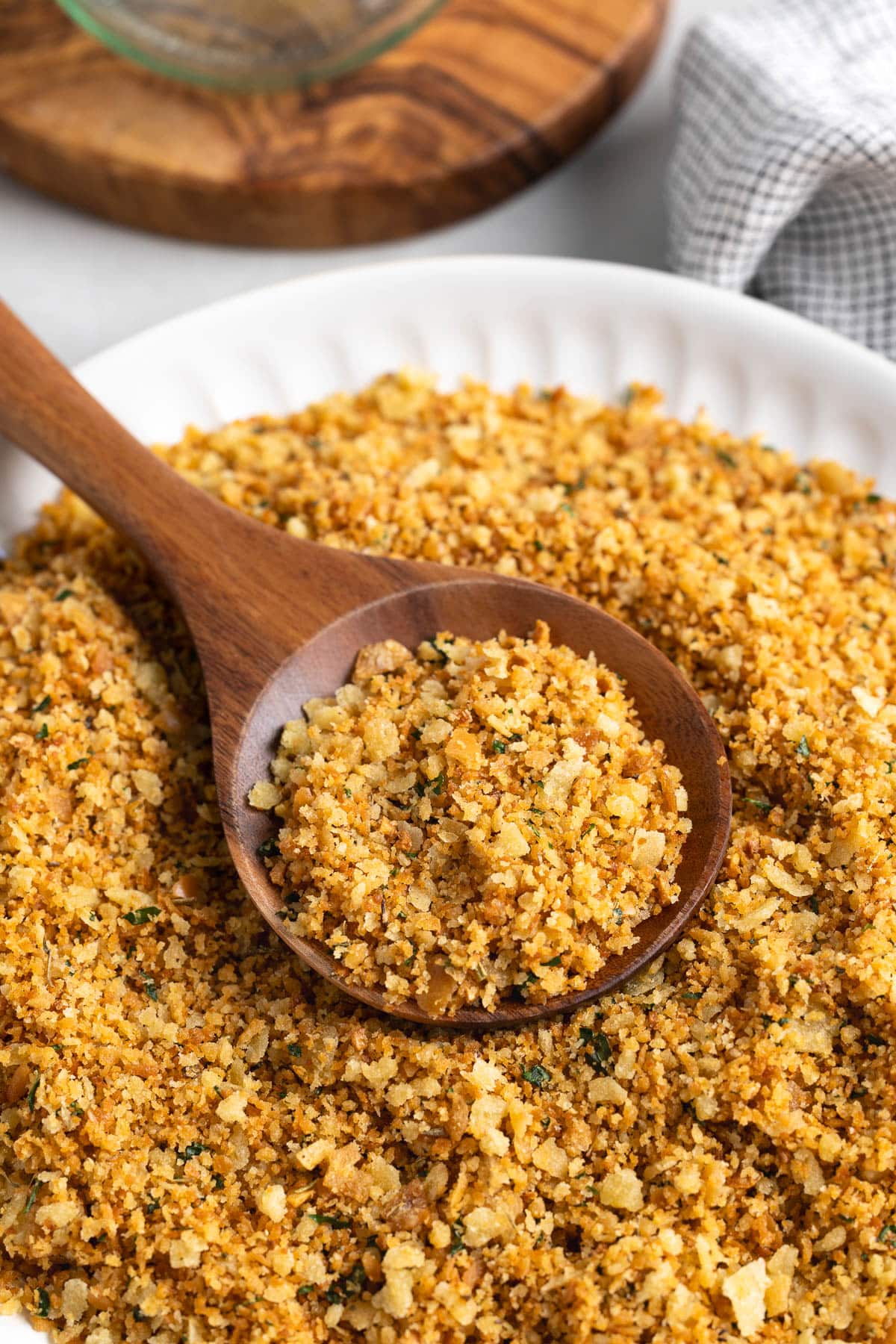
As a kid I crushed up Ritz crackers over top of my salad and thought that was *chef's kiss* the height of gourmet. Homemade pangrattato, with its flaky crispness and herb and garlic breadcrumb flavor, is the grown up version of that.
Like eggs in purgatory, pangrattato has its origins as cucina povera, a manner of Italian cooking focusing on simple dishes that can stretch what you have on hand to satisfy without costly meat, cheese, etc. With its base of stale grated bread and modest seasonings, think of pangrattato as a more economical Parmesan, if you will. A sprinkle-able garnish that brings its own complementary flavor - and in this case, crunch!
The essence of this sort of food is to make things work with what you have available, so use this recipe as a baseline to fit your tastes. Swap out or add herbs and spices, add zest or bolster with Parmesan, etc.
Recipe Ingredients
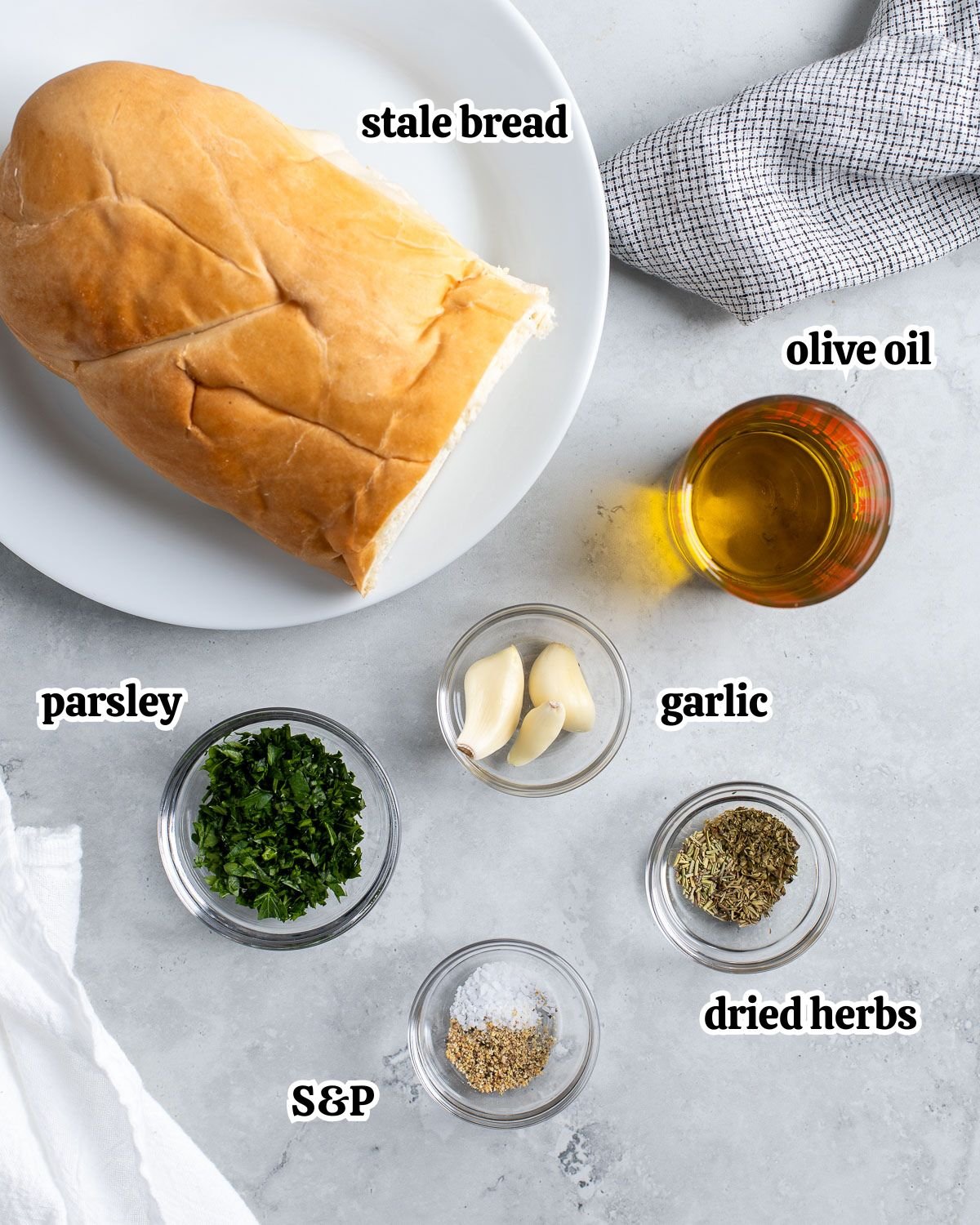
Bread: Use a wide loaf of bakery bread, like Italian bread or sourdough, so there's more of the soft interior bread versus harder crust. Choose bread without seeds on the crust as the seeds may burn during the cook time. And let it get 2-3 days stale! The drier texture of stale bread helps produce the crispest, lightest crumbs.
Olive oil: This has an unmatched flavor that shines in pangrattato, so I recommend not substituting it here.
Garlic: For the brightest flavor use cloves that are freshly purchased, not the ones that have been hanging around the pantry for some time. And while convenient, jarred minced garlic just doesn't have the same punch as fresh.
Dried herbs: I like to use rosemary, oregano, and thyme but varieties can be mixed and matched to fit your tastes.
Fresh parsley: Add this at the end so it retains its flavor. Dried parsley doesn't have much "pop" like fresh does, but can be used in a pinch. Use one-half teaspoon of dried parsley as a substitute and add it along with the other dried herbs.
Step-by-Step Instructions

- Step 1: Slice or tear bread into roughly half-inch cubes.

- Step 2: Pulse in batches in a food processor until small, coarse crumbs form.

- Step 3: Heat olive oil in a large pan over low heat, then cook garlic for one minute.

- Step 4: Increase the heat to medium-low and add the bread crumbs, dried herbs, salt, and pepper and stir to combine.

- Step 5: Toast, stirring very frequently, until crisp and golden-brown to your liking. Reduce the heat if necessary to ensure the breadcrumbs toast evenly and don't burn. This can take anywhere from 10-20 minutes, depending upon your stove and temperature. Stir in the fresh parsley a few minutes from the end of the cook time.
Flavor Variations
As written, this pangrattato recipe keeps things simple so the garlic and Italian herb flavor can shine. Here are ways I've zhushed it, depending upon what I'm serving:
- Adding a shake or two of crushed red pepper for some heat.
- Doubling the rosemary for a bolder, prominent flavor.
- Stirring in finely-grated lemon zest near the end of the cook time. This is especially nice if you plan for it to accompany vegetables or a seafood dish.
- Combining with grated Pecorino Romano - the best of both worlds!
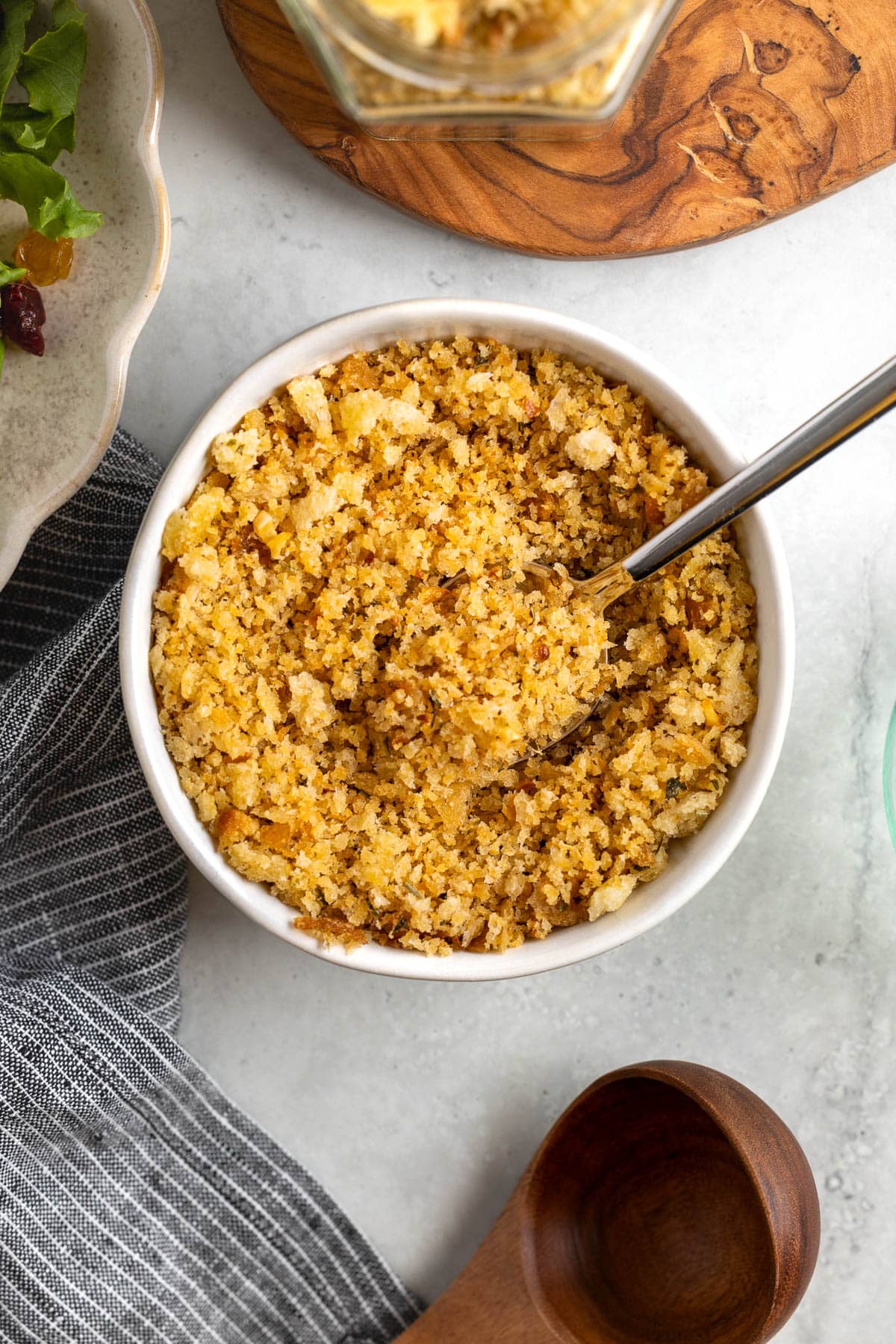
Tips and Tricks
- Blitz in batches. Processing half of the bread at a time helps produce more evenly-sized crumbs. Trying to circulate the whole eight ounces at once risks some of the bread cubes turning to mush before others get a chance to break down.
- Stir (very) frequently - This is crucial for even toasting.
- Be mindful of the heat - Use low heat with the garlic to ensure it doesn't brown, and increase to medium-low-ish when toasting the bread. But keep a close eye! You want to allow the breadcrumbs time to crisp and dry before overly browning or burning, so adjust the heat downward as necessary.
- Fresh herb substitutions - All fresh herbs can be used in place of dried. The general guidance is to use three times the amount of fresh herbs in place of dried (so one tablespoon fresh for one teaspoon dried).
- Stick to the stovetop method - Though it's always tempting to see if recipes that pan fry using tablespoons of olive oil can air fry, I would not air fry pangrattato. The fan mechanism will cause the small, light bread bits to go flying all over your air fryer and risk a fire.
- Storage - Let pangrattato cool completely before storing in an air-tight container. Any residual heat will create condensation in the container that can soften the breadcrumbs and reduce their crispness.
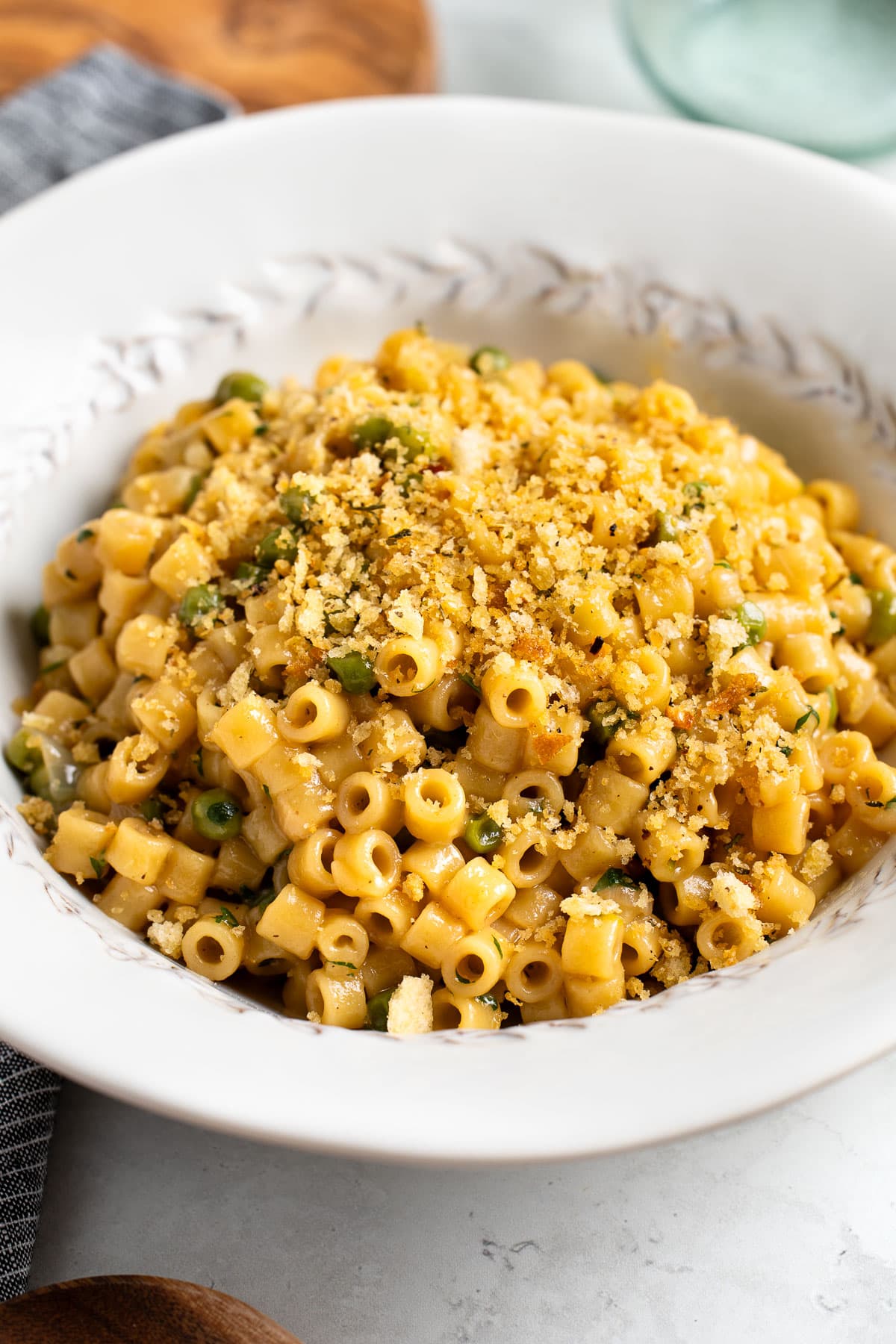
Serving Suggestions
No matter how you like to eat these crunchy Italian breadcrumbs, one important tip remains true: garnish at the table just before digging in for maximum crispness.
Salad: Scatter over in place of croutons. The herby flavor pairs well with a spinach and arugula salad and its citrusy vinaigrette.
Pasta: Simple pastas, like pasta and peas, pasta and chickpeas, etc., benefit nicely from a savory breadcrumb garnish. And they add great crunch to stovetop mac and cheese.
Soups: Great on thick and creamy dishes, like potato and pureed white bean soup.
Vegetables: The combination of textures and flavors makes pangrattato a perfect roasted vegetable topping. Sprinkle over roasted broccoli, cauliflower, carrots, or broccolini, for an instantly elevated side dish.
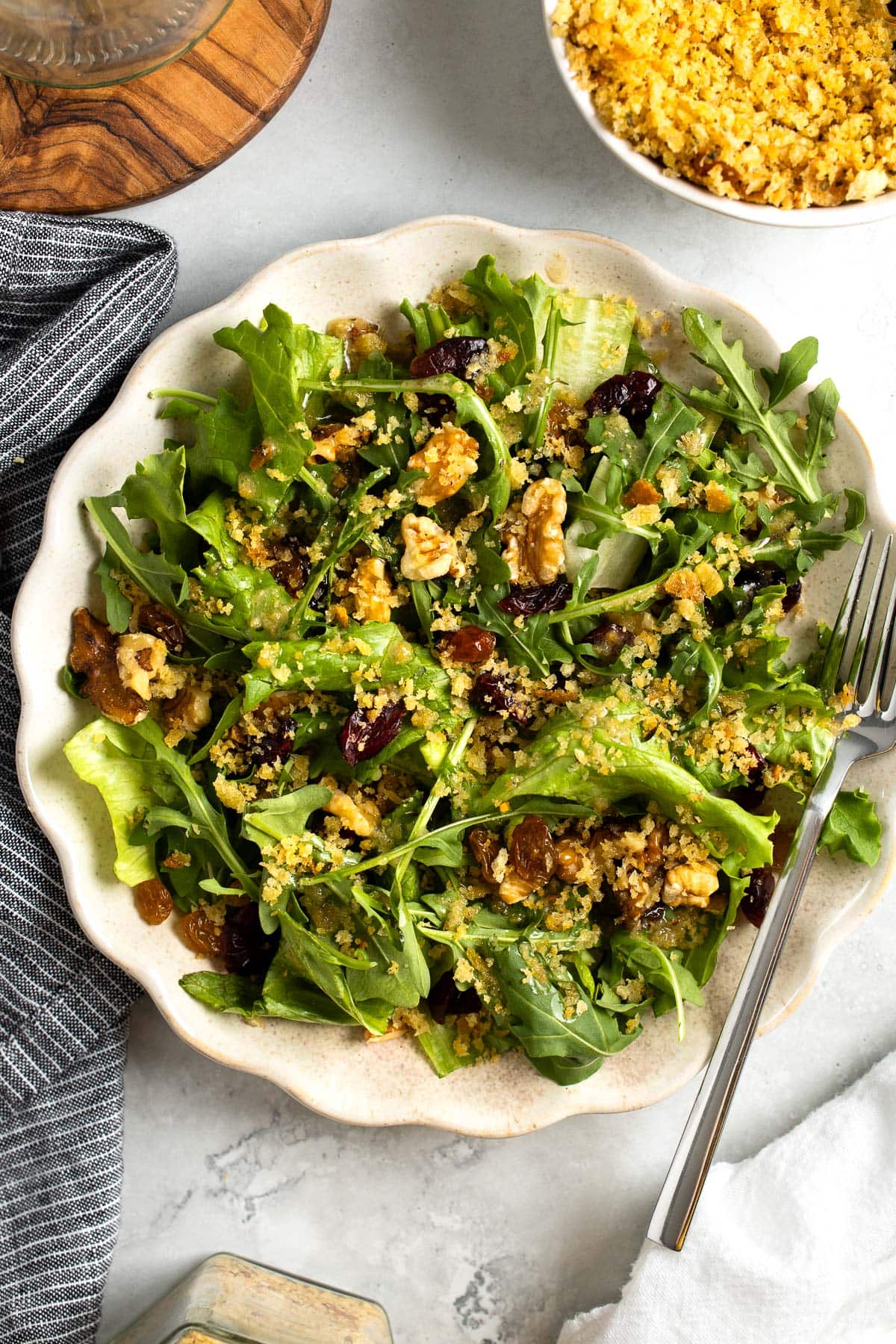
Related Recipes

Did you enjoy this recipe?
I’d love for you to leave a star rating and a comment review in the recipe card below!
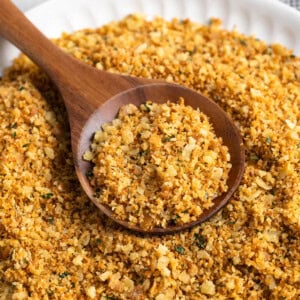
Pangrattato
Ingredients
- 8 ounces 2-3 days stale bread Italian or sourdough (about 4 cups crumbs)
- 5 Tablespoons olive oil
- 3 cloves garlic minced
- ½ teaspoon dried oregano
- ¼ teaspoon dried rosemary
- ¼ teaspoon dried thyme
- ¼ teaspoon fine salt
- Cracked black pepper to taste
- 1 ½ Tablespoons chopped fresh parsley
Instructions
- Slice bread into roughly half-inch cubes and pulse in a food processor until small, coarse crumbs develop (some slightly larger pieces are fine). Work in batches as to not over-process the bread.
- Add olive oil to a large pan and heat it over low heat. Add the minced garlic and cook for 1 minute. This is to flavor the oil - the garlic should not brown.
- Increase the heat to medium-low and add the breadcrumbs to the pan. Stir to coat them with oil as evenly as you can, then stir in the dried oregano, dried rosemary, dried thyme, salt, and pepper.
- Toast for 10-20 minutes, stirring very frequently, or until evenly golden to golden-brown and crisp. Add the chopped fresh parsley during the last few minutes of cook time. Reduce the heat as needed to ensure the bread crumbs don't burn before they crisp.
- Immediately turn out the pangrattato onto a plate or pan to cool completely. Store once cooled in an air-tight container and refrigerate for up to a week. It can also be frozen in an air-tight freezer bag (with all excess air pressed out) for several months.
Notes
- Flavor variations: Add crushed red pepper flakes, grated lemon zest and/or other fresh herbs near the end of the cook time, or combine with grated Parmesan or Pecorino Romano when serving.
- Fresh herb substitutions: For fresh oregano, rosemary, and/or thyme, add about three times as much fresh herbs as dried (so 1 ½ teaspoons fresh for ½ teaspoon dried). Add them to the recipe near the end with 5 or so minutes of cook time remaining.
Nutrition
Nutritional information is provided as an estimate. As it can vary due to many factors (brands used, quantities, etc.), we cannot guarantee its accuracy.
Food Safety and Nutrition DisclaimerWould you like to save this?
Plus receive periodic recipe newsletter emails.
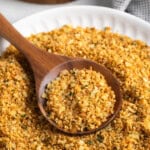
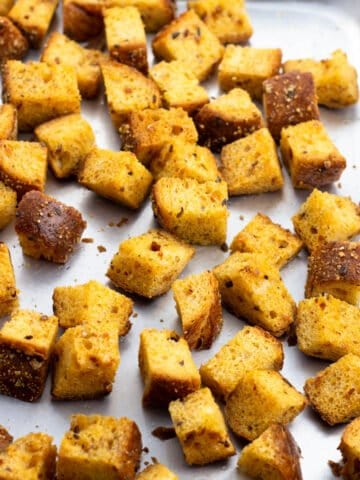
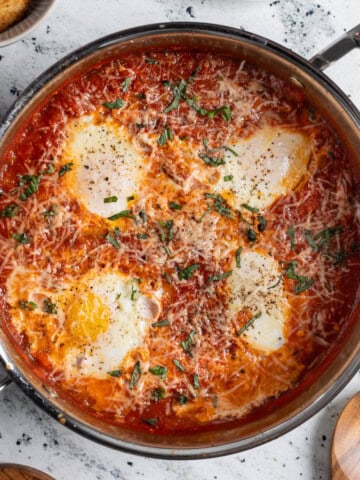
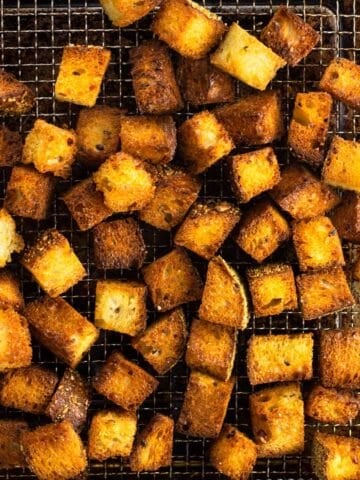
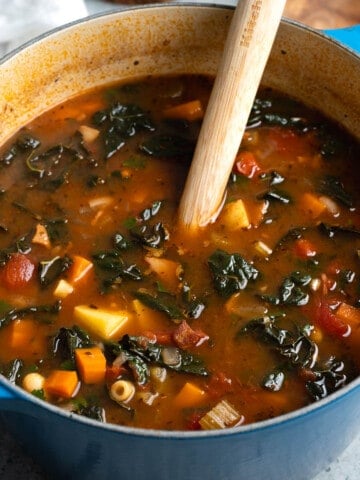
Comments
No Comments